The Pine: [Planting, Characteristics, Irrigation, pH, Pruning, Problems]
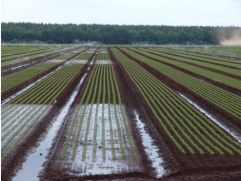
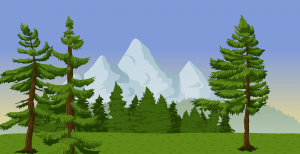 A pine is a type of conifer in the genus Pinus, in the family Pinaceae.
A pine is a type of conifer in the genus Pinus, in the family Pinaceae.
Pinus is the only genus in the subfamily Pinoideae. The Plant List compiled by the Royal Botanic Gardens at Kew and the Missouri Botanic Garden accepts 126 pine species names as current, along with 35 unresolved species and many more synonyms.
Pine can also refer to wood derived from pine trees; Pine is one of the most widely used types of wood for lumber.
Pine Characteristics
| Botanical name: | Pinus pinea. |
| Common name: | Stone Pine, Umbrella Pine, Italian Stone Pine, Parasol Pine. |
| Plant type: | Perennial plant with needles. |
| adult size: | 3 to 80 m tall, with most species reaching between 15 and 45 m. |
| Sun exposure: | full sun. |
| Floor type: | Medium dry, well drained soil. |
| soil pH: | Tolerates a wide range, from acid to slightly acid. |
| flower colour: | It doesn’t bloom. |
| Flowering time: | It doesn’t bloom. |
| Native area: | Mediterranean region. |
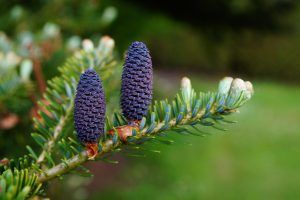
Pines are resinous evergreen trees (or, rarely, shrubs) that grow between 3 and 80 m tall, with most species reaching between 15 and 45 m.
The smallest are the Siberian Dwarf Pine and the Potosi Pine, and the tallest is a 280-foot-tall Ponderosa Pine located in the Rogue River-Siskiyou National Forest of southern Oregon.
Pine trees are long-lived, often reaching ages between 100 and 1,000 years, some even more. The longest-lived is the Great Basin Aleppo pine, Pinus longaeva. An individual of this species, nicknamed «Methuselah», is one of the oldest living organisms in the world, at about 4,600 years old.
This tree is found in the White Mountains of California. There is an older tree, now felled, that was dated at 4,900 years. It was discovered in a copse below Wheeler Peak and is now known as «Prometheus» after the immortal Greek character.
Did you know…?The spiral growth of pine branches, needles, and cone scales can be arranged in Fibonacci number ratios.
The new spring shoots are sometimes called «candles»; they are covered in brown or whitish bud scales and point upward at first, then turn green and spread out. These «candles» offer foresters a means of assessing soil fertility and tree vigor.
How are the leaves of the pine?
- Seed leaves (cotyledons) in seedlings are borne in a whorl of 4-24.
- The juvenile leaves, which immediately follow the seedlings and young plants, are 2 to 6 cm long, simple, green or often bluish-green, and spirally arranged on the shoot. They are produced for six months to five years, rarely more.
- The scale leaves, similar to shoot scales, are small, brown, and non-photosynthetic, and are spirally arranged like juvenile leaves.
- The needles, the adult leaves, are green (photosynthetic) and are grouped in clusters called fascicles. The needles can be from one to seven per fascicle, but generally they are from two to five. Each fascicle is produced from a small bud on a dwarf shoot in the axil of a scaly leaf.
- These bud scales often remain in the fascicle as a basal sheath. The needles persist for 1.5-40 years, depending on the species. If the growing tip of a shoot is damaged (for example, eaten by an animal), the fascicles of needles just below the damage will generate a stem-producing bud, which can replace the lost growing tip.
How to make our pines grow faster?
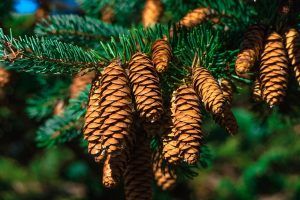
Pine can be considered a fast growing tree.
However, it will take years to get to a considerable size.
Pruning off new branches or shoots in the spring can encourage bushier growth in your pine if you want it to appear fuller. Use hand pruners to trim the candles roughly in half to encourage new growth.
Is it difficult to grow a pine tree?
Nope.
Pines are trees that grow fast and in virtually any condition. In fact, in many places they are considered as invasive species.
You will need little to get your pine to take hold and grow strong.
Where to plant a pine?
Precautions to take before planting a pine
Watch where you plant your pines.
Pine trees can grow extremely large and their roots are very powerful. They will raise floors and can even touch the structure of a house.
Do not plant these trees near houses, swimming pools or any other structure. Also, don’t plant them near other trees if you don’t want the pine to swallow them up.
The pH of the soil
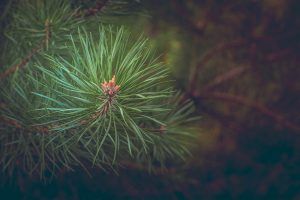
Check the pH level of the soil with your pH probe and adjust the pH of the soil as needed.
For an Eastern White Pine, for example, the optimal soil pH level should be slightly acidic, in the range of 6.5 to 6.8. If the pH level is much higher than 7.0, the soil is too alkaline.
Purchase a quantity of garden sulfur and apply it to the surface of the soil around the tree. If the pH level is far below the optimal range, your soil is too acidic. A surface application of dolomitic lime will sweeten the soil to the proper pH level.
light needs
The pine needs a lot of sunlight. Try to plant it in a place where it does not receive shade from other trees and/or buildings.
pine reproduction
The most common method of reproduction is from seed, but these will not be viable unless the tree is relatively mature.
The tree must have several years of cone production before it can reproduce seeds. Propagation of seeds is a somewhat complicated process:
- Collect the seeds from a dried pineapple and soak them in water overnight. Next, place the seeds in a plastic bag filled with moist sphagnum moss and place them in a refrigerator for 60 to 90 cold days to encourage germination.
- Fill a few small pots with a seed mix (or a mix of sand, peat moss and vermiculite) and plant the seeds about a centimeter deep.
- Mist the surface with water and place the pots in a sunny window.
- Check daily and keep soil surface moist with spray. As the seeds sprout, thin out the weakest seedlings.
- Grow the plants in their pots for a full year until they begin to form branches. They will then be ready to be transplanted to a spot in the garden.
Recommendation: Pine planting by cutting
As we have seen before, the reproduction of the pine by seed (pineapple) is complicated. So we recommend doing it by cutting or planting.
Steps to follow:
- Dig a hole deep enough for the plant to fit comfortably. But without going too deep.
- Water said hole and deposit some fertilizer (manure, for example).
- Deposit the pine plant. Cover with soil again and water lightly.
- Wait a few days to see how the campus reacts.
- In case you live in a very cold and/or windy area, protect the pine with plastic that acts as a shield.
What is the best fertilizer to use for our pines?
According to the University of Minnesota, pine trees should be fully fertilized with nitrogen, phosphorus, and potassium. Nitrogen content should be slightly higher than phosphorous and potassium levels; 10-8-6 is generally recommended for pines and shrubs.
Can Too Much Water Kill My Pine Tree?
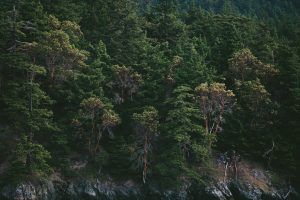
Overwatering your pine tree can kill it just as quickly as letting it go thirsty. Too much of everything is bad, even when it comes to watering your trees, so it’s important to know if your pine (Pinus spp.) is being over-watered.
Roots need oxygen to survive, but overwatering your pine tree will drown it.
Specifically, the pine is a species that has been characterized by surviving in areas where rainfall is scarce (such as the Mediterranean). So the flooding and drowning of its roots greatly harms it.
How to revive a dying pine?
Dead and dying wood is a magnet for disease and pests, so it needs to go.
Prune as necessary, cutting back healthy branches. Use alcohol between cuts to disinfect your tools. Try to maintain the natural shape of the tree and avoid cutting branches flush with the trunk, as this could damage the bark.
Pests and diseases that affect the pine
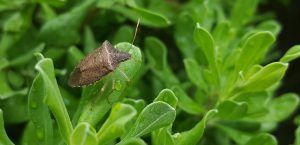
Pine species in general are very hardy. Hence, they are considered as invaders.
pine diseases
They have few serious disease problems. Episodes of pine needle casting, a fungal disease that causes needles to turn brownish-red and fall off, are possible.
This is often a symptom of other problems, such as bark beetles, so check the tree for other pests and diseases.
pine pests
Potential pests include bark beetles and the western conifer seed bug (Leptoglossus occidentalis).
Western conifer bugs rarely damage the tree permanently, although they do reduce seed production. Bark beetles are a more serious problem, although they are not common on stone pines.
These pests cut tunnels in the inner layer of the bark, below the outer bark. They are difficult to treat with pesticides, so the recommended control is to remove and destroy affected branches. A significant infestation may require removal of the entire tree.
How long does the pine live?
It is a conifer of medium longevity that lives for 300 years.
How long does it take to grow the pine?
The time it takes for it to develop its adult tree structure is 20 years.
How long does it take to produce fruit?
As it is a slow-growing species, it will be able to produce the first fruits after 20 years of sowing.
Can it be grown in a pot?
The dwarf version of the pine can be grown in a pot. Normal sized ones are best kept on land.
How many times does the pine produce fruit?
The production of pine fruits is annual.
Should the pine be pollinated to obtain fruit?
Yes, it should be pollinated and as a method to carry out this process, it uses the force of the wind.
How cold can the pine tree tolerate?
Pines are characteristic plants of cold climates with intense frosts.
They do not freeze because their sap has an antifreeze effect that helps in this process.
How many pines can be planted per hectare?
The cultivation of pine trees per hectare is variable depending on the density and plantation framework that is sought to be obtained.
Thus, there are hectares of land with 300 pines, while in other spaces they exceed 1,100 copies.
How much heat and/or drought can the pine tree tolerate?
It adapts well to areas that reach extreme heat at certain times of the year, even close to 40° C.
It is also capable of resisting occasional droughts when planted in soil that helps retain moisture.

![Photo of Plant Eggplants in [12 Steps]: Guide to Harvest Successfully](https://www.complete-gardening.com/wp-content/uploads/2022/08/plant-eggplants-in-12-steps-guide-to-harvest-successfully-390x220.jpg)
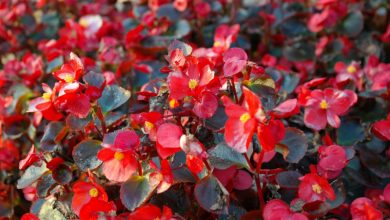
![Photo of Mulch: [Examples, Materials and How to Make a Homemade One]](https://www.complete-gardening.com/wp-content/uploads/2022/08/mulch-examples-materials-and-how-to-make-a-homemade-one-390x220.jpg)
![Photo of Misting Irrigation: [Concept, Advantages and Requirements]](https://www.complete-gardening.com/wp-content/uploads/2022/08/misting-irrigation-concept-advantages-and-requirements-390x220.jpg)